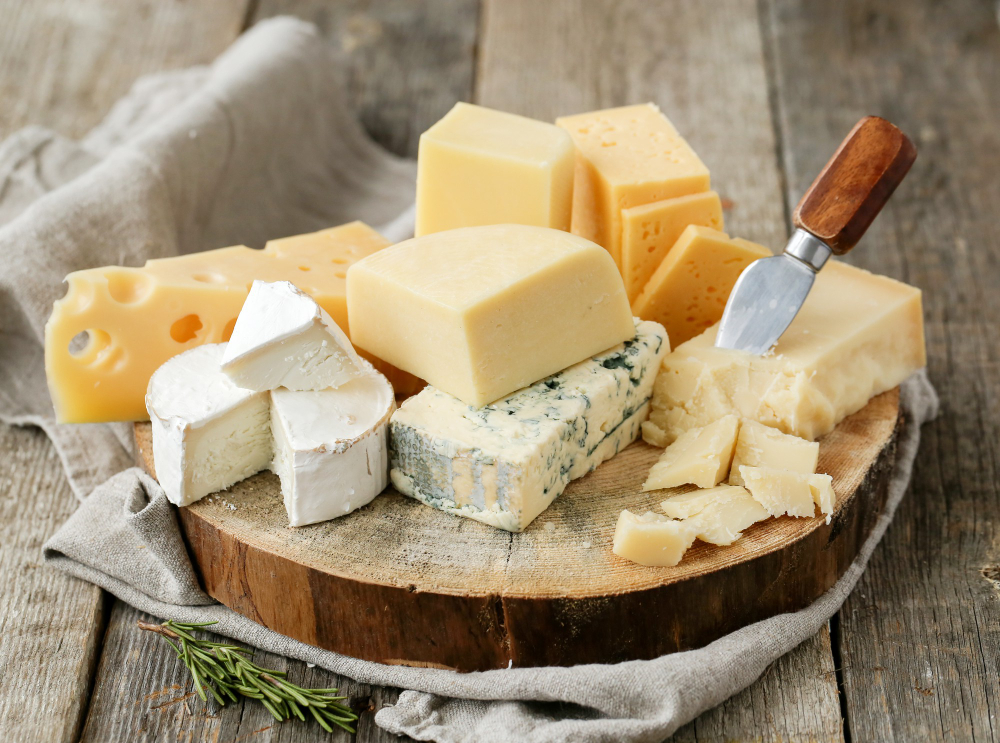
13 Jan Cheese Processing Using Starter Culture: A Detailed Guide
Cheese is one of the most diverse and beloved dairy products, with a rich history spanning cultures and cuisines. The foundation of cheese production lies in the use of starter cultures, which ensure consistent quality, flavor, and texture. This article delves into the process of cheese production using starter cultures and highlights the critical role they play.
What is a Starter Culture?
A starter culture is a carefully selected group of microorganisms, primarily lactic acid bacteria (LAB), used to initiate the fermentation process in cheese production. These microorganisms metabolize lactose (milk sugar) into lactic acid, which lowers the pH and aids in curdling milk. Common bacteria used in starter cultures include Lactococcus lactis, Lactobacillus helveticus, and Streptococcus thermophilus. Specific combinations of these microbes contribute to the unique characteristics of various cheese types.
Key Steps in Cheese Processing Using Starter Culture
- Milk Selection and Preparation:
- Use high-quality milk, which can be cow, goat, sheep, or buffalo milk, depending on the type of cheese.
- Pasteurize the milk to eliminate pathogens and unwanted microorganisms.
- Standardize fat and protein levels as required for the specific cheese variety.
- Addition of Starter Culture:
- Cool the milk to the optimal temperature for the starter culture, typically between 30–32°C (86–89.6°F) for most cheese types.
- Add the starter culture in the recommended proportions and mix thoroughly to ensure even distribution.
- Coagulation:
- Add rennet or a coagulant along with the starter culture. Rennet contains enzymes that act on casein proteins in the milk, helping form curds.
- Allow the milk to sit undisturbed until it coagulates into a gel-like consistency. This can take 30 minutes to a few hours depending on the cheese type and process.
- Cutting the Curd:
- Use knives or specialized tools to cut the coagulated milk into smaller pieces (curds). The size of the curds affects the texture of the final cheese.
- Cooking and Stirring:
- Heat the curds gently while stirring. This step helps expel whey (liquid portion) and firm up the curds.
- The temperature and duration depend on the desired cheese type; for example, higher temperatures are used for hard cheeses like Parmesan.
- Draining and Shaping:
- Drain the whey from the curds using a cheesecloth or molds.
- Press the curds into molds to shape the cheese and remove excess moisture.
- Salting:
- Add salt to the cheese, either by direct addition, brining, or surface rubbing. Salt enhances flavor, acts as a preservative, and regulates moisture.
- Ripening and Aging:
- Allow the cheese to mature under controlled temperature and humidity conditions. The duration can range from a few days to several years, depending on the cheese variety.
- During this period, the starter culture continues to work, developing complex flavors and textures.
Benefits of Using Starter Cultures in Cheese Production
- Consistency:
- Starter cultures ensure uniform fermentation, leading to consistent taste, texture, and quality across batches.
- Enhanced Flavor and Aroma:
- Different cultures contribute unique flavor profiles, making it possible to produce diverse cheese varieties.
- Safety:
- The acid produced by starter cultures inhibits the growth of harmful pathogens, ensuring food safety.
- Texture Development:
- Specific cultures influence the breakdown of proteins and fats, leading to the desired texture in cheeses like soft Brie or hard Cheddar.
- Customization:
- Manufacturers can tailor the combination of cultures to produce specialty cheeses that cater to regional or market preferences.
Challenges in Using Starter Cultures
- Contamination:
- Maintaining a sterile environment is crucial to prevent contamination by undesirable microorganisms.
- Temperature Sensitivity:
- Deviations from optimal temperatures can affect the activity of the starter culture, leading to inconsistent results.
- Cost:
- High-quality, specific starter cultures may increase production costs, especially for artisanal or specialty cheeses.
Innovations in Starter Culture Technology
Advances in microbiology and biotechnology have paved the way for more robust and diverse starter cultures. Some notable innovations include:
- Probiotic Cultures: Incorporating probiotic strains like Lactobacillus acidophilus to create functional cheeses with added health benefits.
- Adjunct Cultures: Adding non-starter cultures to enhance flavor complexity and texture.
- Custom Blends: Tailored cultures designed to replicate traditional or regional cheese-making processes.
Conclusion
Starter cultures are the backbone of modern cheese processing, enabling producers to create a vast array of cheeses with distinct flavors, textures, and aromas. By ensuring safety, consistency, and quality, these cultures have revolutionized the dairy industry. As innovations continue to emerge, the art and science of cheese-making are set to reach new heights, offering endless possibilities for cheese lovers around the globe.


